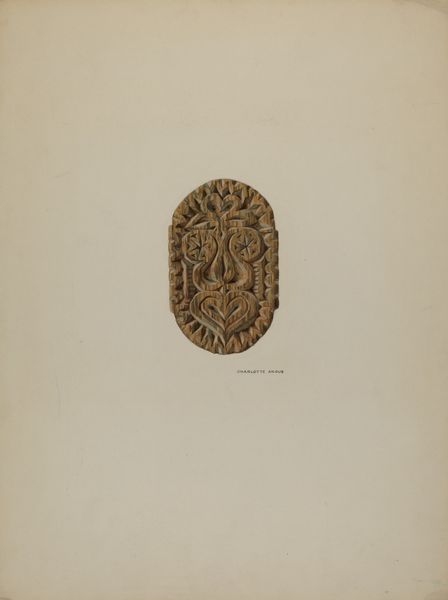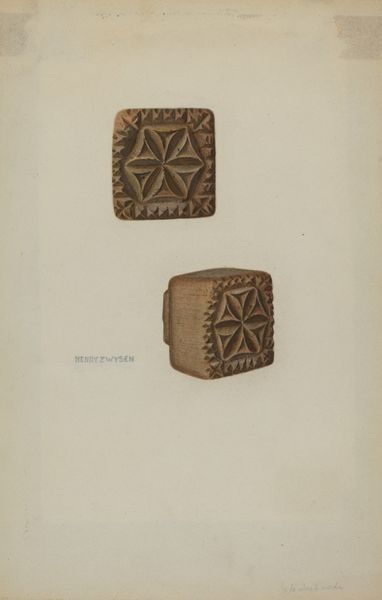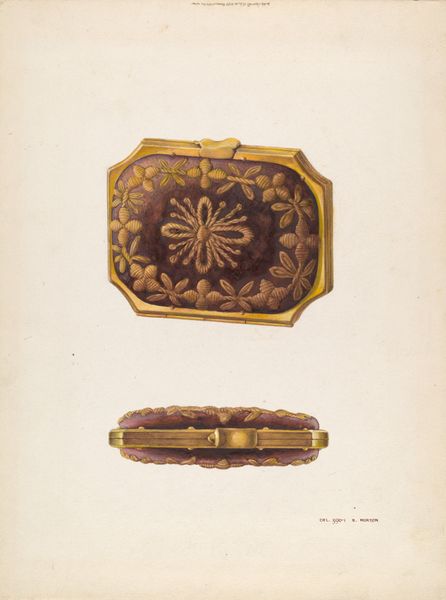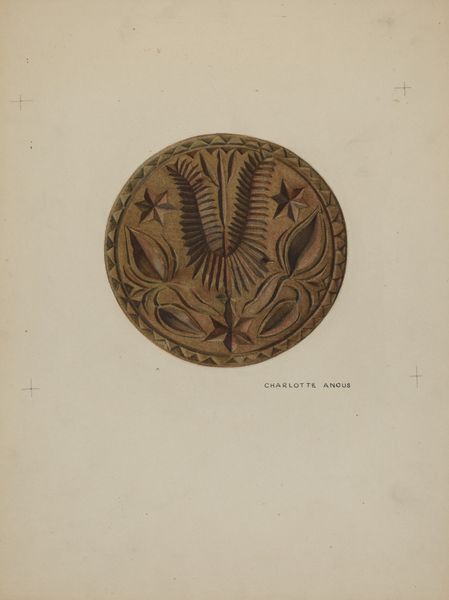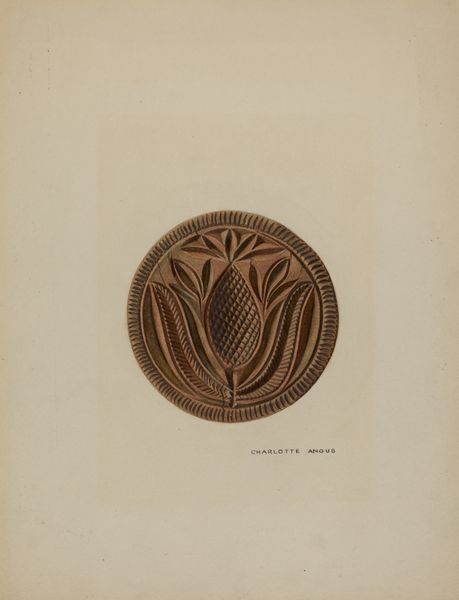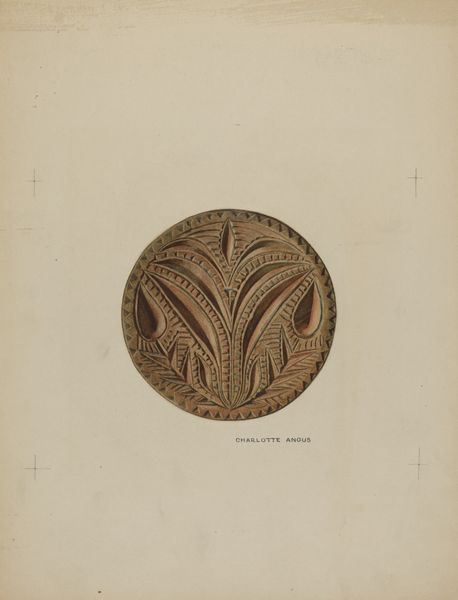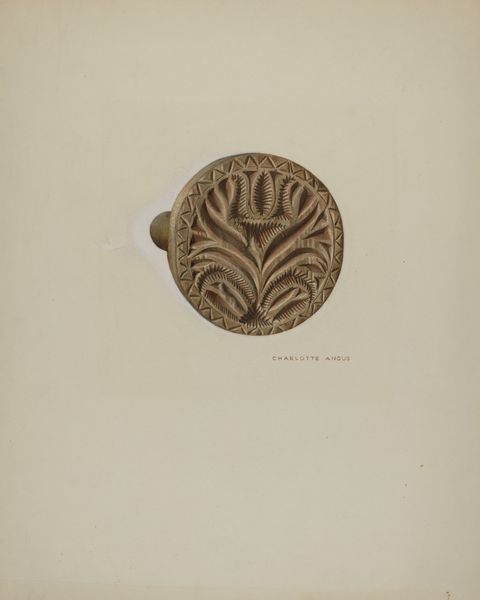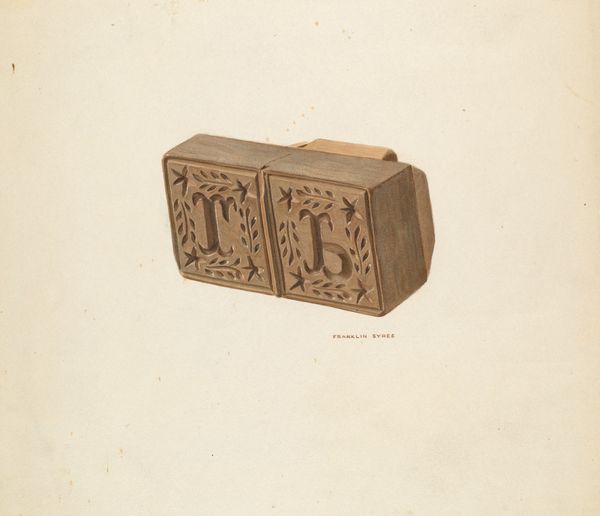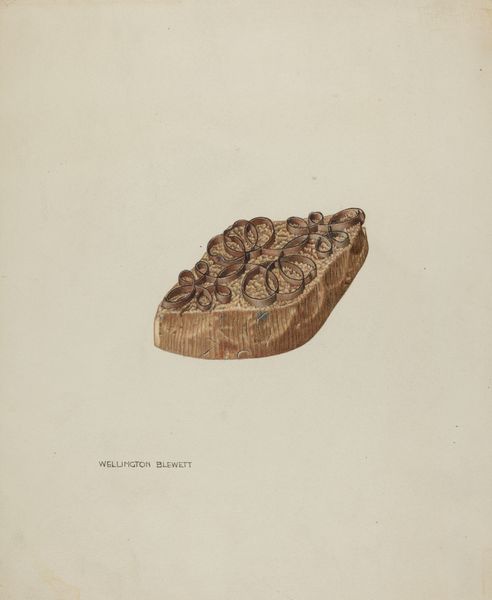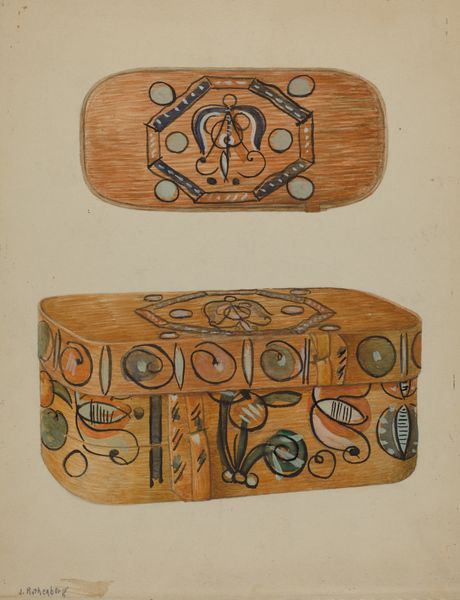
drawing, carving, wood
#
drawing
#
carving
#
pencil drawing
#
folk-art
#
wood
Dimensions: overall: 35.3 x 28.5 cm (13 7/8 x 11 1/4 in.)
Copyright: National Gallery of Art: CC0 1.0
Editor: So, this is Franklyn Syres' "Carved Pinewood Mold" from around 1939. It's a pencil drawing, depicting a carved wood mold. I am interested in folk art in general. The surface is decorated with floral elements. I get a sense of nostalgia looking at this. How do you interpret this drawing, its design elements, and their history? Curator: What strikes me immediately is the tension between the depiction and the depicted object. The artist chose to draw the wooden mold instead of focusing on what the mold might produce, such as baked goods or candies. Think about the symbolism here. The mold *contains* potential, memory... sustenance even. Consider how food carries familial memory, comfort. Editor: That's interesting! The idea of the mold holding memories... Curator: Exactly! The floral motifs enhance this. Notice the stylized flowers and leaves – these aren't realistic botanical studies. They are simplified, archetypal. They speak to a collective understanding of nature, renewal, and even perhaps, celebration. Editor: So, it's less about the individual flower, and more about what flowers represent in a broader cultural context? Curator: Precisely. The act of carving itself is important, it signifies skill and devotion to design. Think about how the drawing renders each indent like a story told to entertain the viewer. It makes me think about similar examples of food presentation throughout history. Editor: I see. The drawing preserves not just the object, but the cultural memory embedded within it. I hadn't considered how something as simple as a mold could carry so much significance! Curator: Indeed. It invites us to consider the cultural history embedded in these objects. Each carved line and stylized leaf is a link to the past. What did we discover through that experience?
Comments
No comments
Be the first to comment and join the conversation on the ultimate creative platform.
